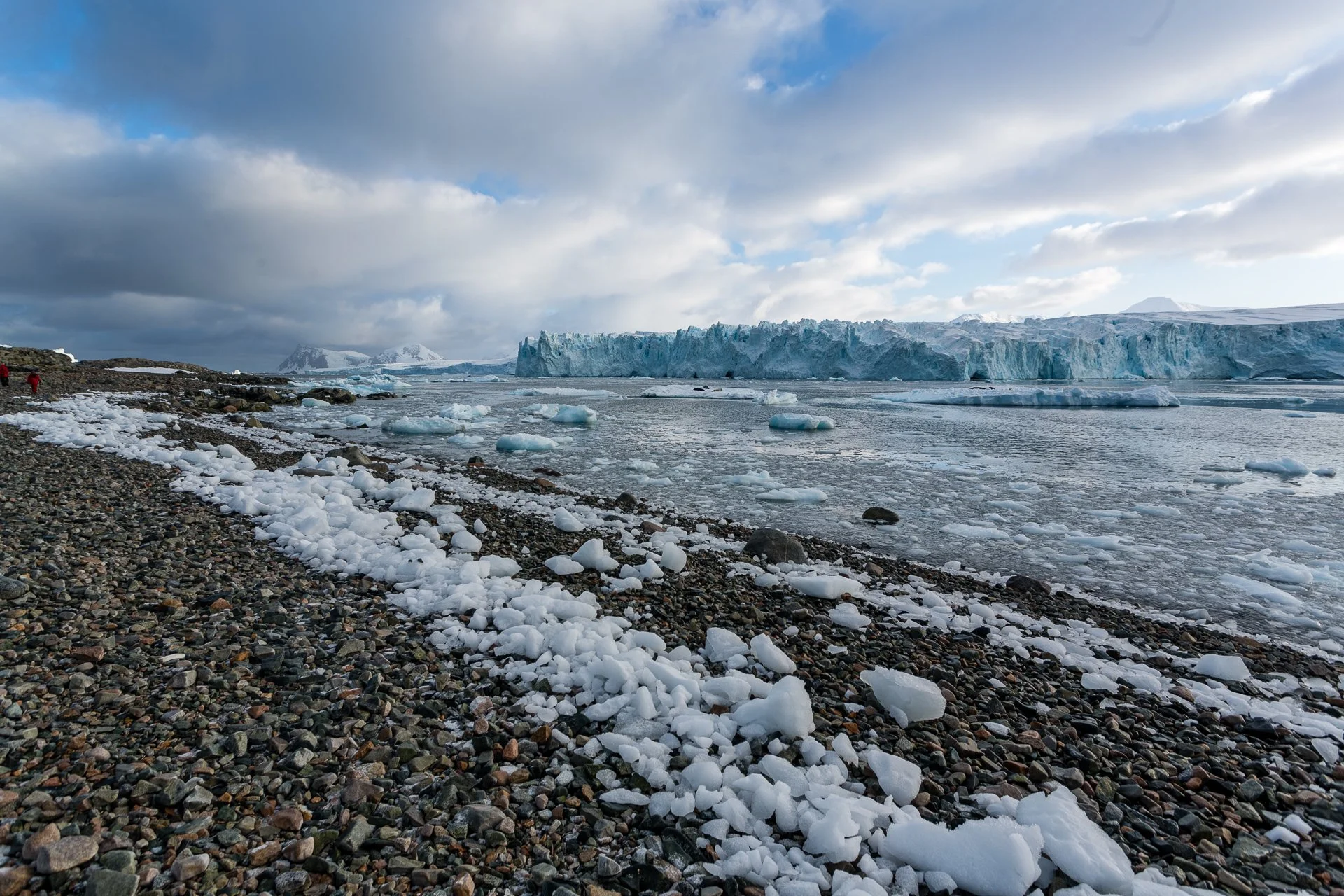Stonnington Island
The island houses two bases and a memorial as well as Anemometer Hill. The United Kingdom Antarctic Place-Names Committee imaginatively named the hill for the Anemometer on the summit.
Experience
One of the most apparent sights on Stonnington are the two Crosses for the British men of the British Antarctic Survey who died in a crevice incident trying to cross the glacier on skis.
East Base
The first of the two bases, East Base, was settled in 1939 by the US Antarctic Service and is the oldest research station in the Antarctic and currently a site of historical importance that visitors can enter, carefully and in small groups.
The base is wood and made up of several buildings, the only one you can enter. The station was occupied twice, with the second expedition including Jackie Ronne and Jennie Darlington, who were the first women to spend a winter in Antarctica. Darlington was the first woman to become pregnant in Antarctica and later authored her novel “My Antarctic Honeymoon”.
In a somewhat sad story, the 72 dogs of the original US expedition couldn’t be brought back in the small plane that evacuated the Americans. So instead, they killed half of the dogs when the first 12 men left and then rigged the final dogs with explosives, left in their sledging harness. This approach allowed the bombs to detonate once the last men had left, and the dogs would not be needed.
It was considered mercy, as to do otherwise would have condemned the dogs to a slow cold death. A few dog skeletons were found when teams returned to Stonnington, implying some had slipped their harness before detonation. During the evacuation, the American Expedition leader snuck a puppy out with him, returning as a sledge dog when he returned to Stonnington.
Station E
The other base on this small island is Station E, the British Antarctic Survey Base, until 23 February 1975. The main building was the first two-story building in Antarctica and was named Trepassey House. Unlike the American base and its canteen-style service, curtains and porcelain for proper tea service decorated the British base.
The British base also maintained a workshop and dog cages (this was before the ban on canines in Antarctica)
The expedition team were unsure of what it signified, but between our landing site and Station E, a floor-plan of stones on the beach.
To the northwest sits a vast iceberg, with strange shapes carved by wind and water into its face, which could be seen, with the ice shelf that once connected the island to the glacier on the north.
With so much ice around, there were regular carving sounds, the sudden sharp cracking of ice as it separates from the glacier or berg and then crashes to the water.
All around the island, you could find debris, ropes, wood—some metal, with rust colouring the rocks around them. These items are left where they lay.
Just past the US base, two vehicles that looked almost like tanks have turned to rust, upturned and orange in the sun.
On our return on the boat, we passed several Crabeater Seals on the ice; with the waves causing the ice to rock, the seals were paying more attention than we usually faced.
The island is remarkable to explore as it is a tiny space in a vast continent but an area filled with significance. Two countries based their explorers here, memorials to the dead remain, and it is home to 135 breeding pairs of Imperial Shag, making it an Important Bird Area.
Later that day, we returned to Stonnington Island when the original location for our Polar Plunge into the icy waters of the Antarctic proved to have too much swell.
With a sea temperature of 0.3 degrees C, we had under a minute before our bodies would shut down. Jumpers had a rope belt looped around them securely, a doctor was on call, and Simon the photographer was out in a Zodiac to document the jump, but also so they would be ready to rush to aid.
We were waiting in the mudroom, in our swimmers, for about twenty minutes. Half the people were waiting, wearing multiple layers removed as they got closer to the door. One father was a little disturbed to find out his daughter’s swimsuit was a thong.
Like many things like this, the anticipation worse than reality. Waiting in the queue for your time to jump into the water have you question your sanity.
You stand on the metal boarding ramp, and on a count of three, hurl yourself into the cold waters below. In our case, a curious Crabeater Seal swam back and forth under the ramp watching these strange creatures make such a big deal of getting into the water.
Within a few seconds of hitting the water, you notice that your fingers and toes stop responding, and this slowly spreads back along with your limbs. The staff pulls you back by the rope very quickly, though you have time to do a little swim yourself.
I nearly pulled the guy helping me in, as he did not realise I’d got my legs up on the bar and so had leverage when we locked arms.
From there, it was straight into the sauna for fifteen minutes, though many others took advantage of the whisky.
A total of sixty-three people jumped, setting a record for the ship with more than half of the passengers taking part.
Wildlife
Adélie Penguin
Crabeater Seal
Location
Situated towards the eastern end of Marguerite Bay, Stonnington island is a mere 0.75 km long and 0.37km wide. Small pebbles make up the northern beaches (scattered with animal bones) with more massive rocks on the southern side. Stonnington Island was formerly connected to the Northeast glacier by a snowdrift, though this has long since disappeared.
68° 11’ 19 S 67° 00’ 93 W












